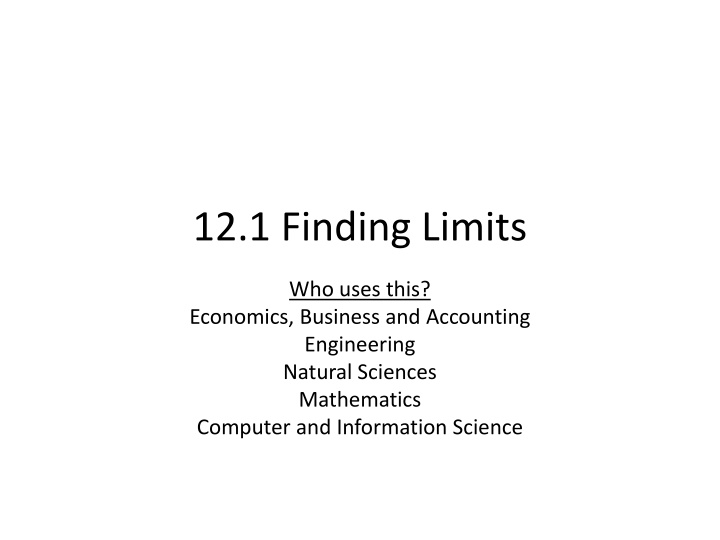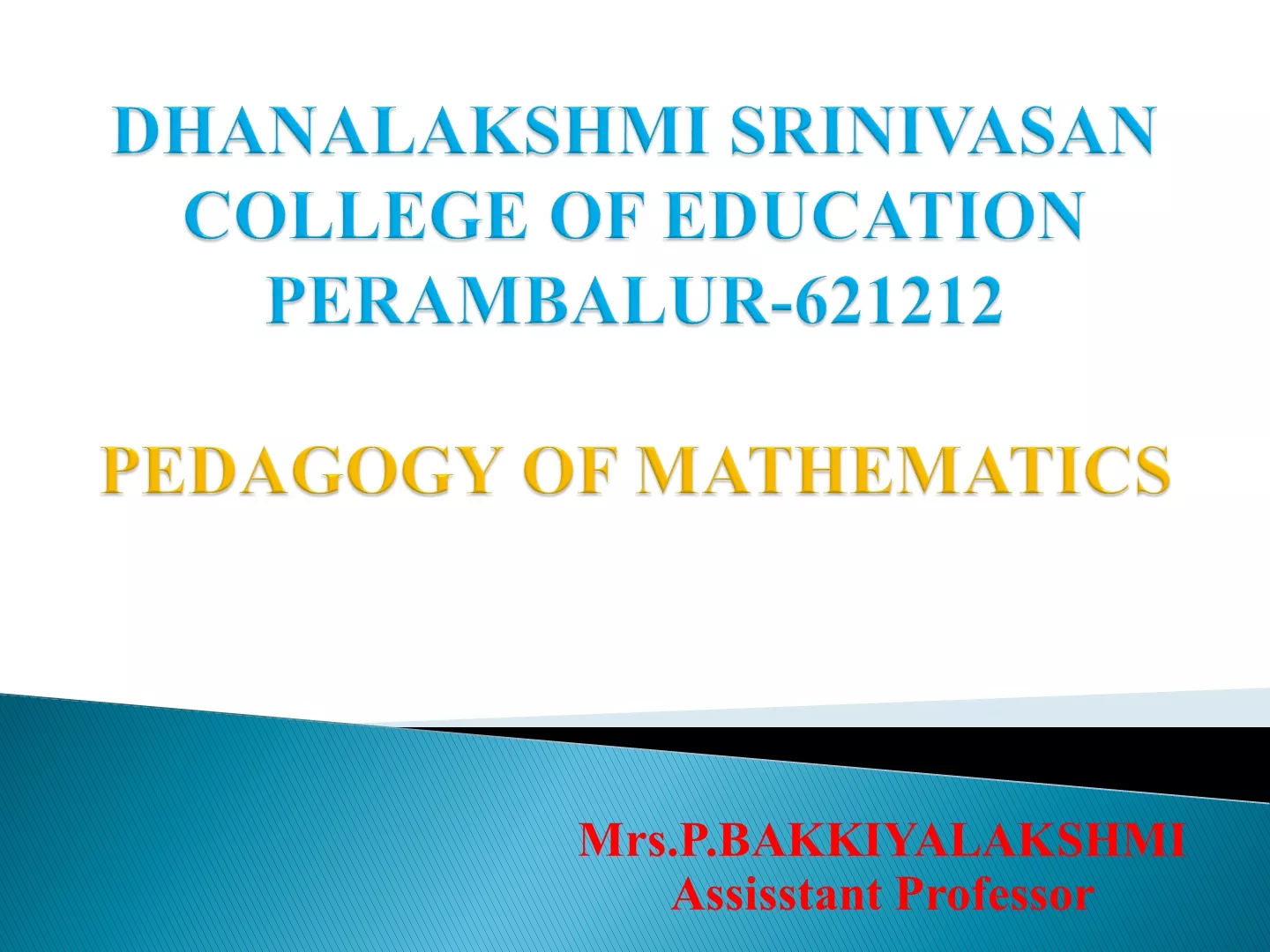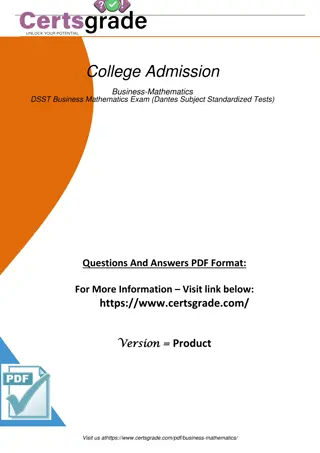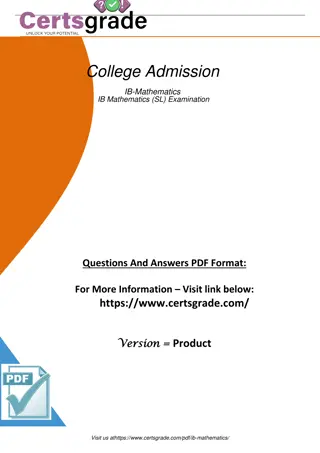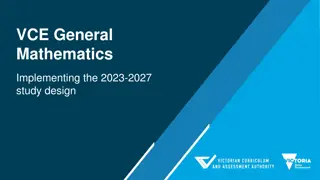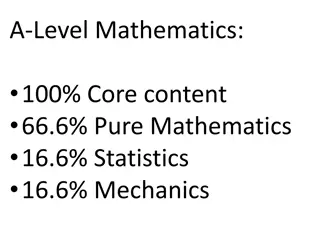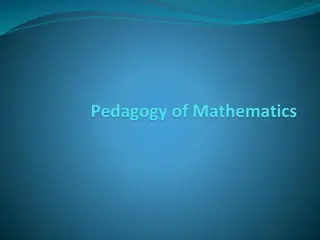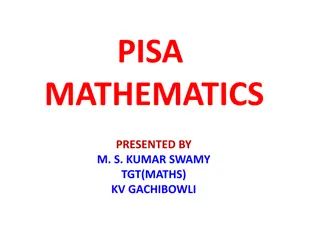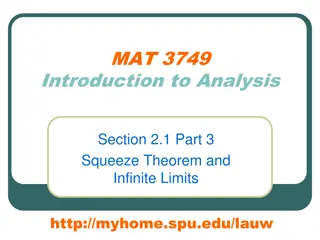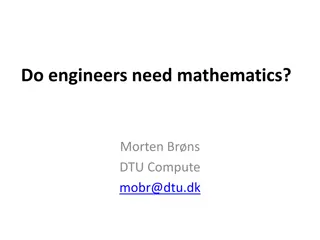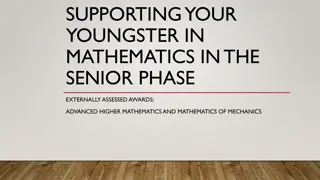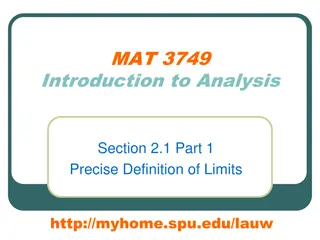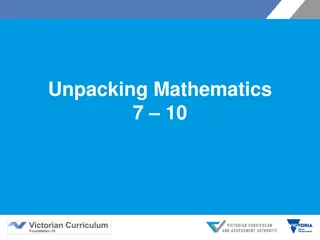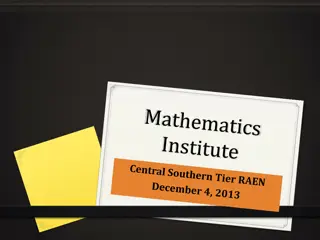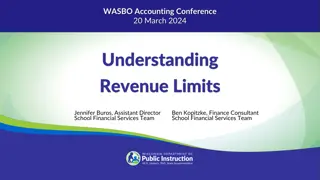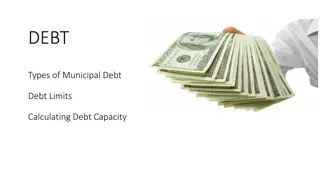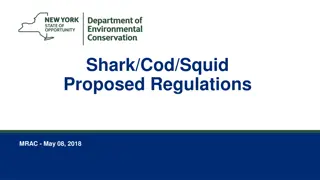Limits in Mathematics: Applications and Concepts
In mathematics, limits play a crucial role in various disciplines such as economics, engineering, natural sciences, and computer science. Understanding limits helps in evaluating functions for specific values and determining the behavior of functions near certain points. This content explores the definition of limits, estimation of limits, and scenarios where limits fail to exist. It also delves into the concept of one-sided limits and their importance in analyzing functions.
Download Presentation

Please find below an Image/Link to download the presentation.
The content on the website is provided AS IS for your information and personal use only. It may not be sold, licensed, or shared on other websites without obtaining consent from the author.If you encounter any issues during the download, it is possible that the publisher has removed the file from their server.
You are allowed to download the files provided on this website for personal or commercial use, subject to the condition that they are used lawfully. All files are the property of their respective owners.
The content on the website is provided AS IS for your information and personal use only. It may not be sold, licensed, or shared on other websites without obtaining consent from the author.
E N D
Presentation Transcript
12.1 Finding Limits Who uses this? Economics, Business and Accounting Engineering Natural Sciences Mathematics Computer and Information Science
Evaluate the function f(x) = x2 x + 2 for values of x near 2 but not = to 2. = 8 = 5.75 = 4.8125 4.3906 = 4.1914 = 4.0003 = (3) (2.5) (2.25) (2.125) (2.0625) (2.0001) f f f f f f Notice that the closer x gets to 2, the closer f(x) gets to 4
Definition of the Limit of a Function lim ( ) x = af x L "the limit of f(x) as x approaches a, equals L if we can make the value of f(x) arbitrarily close to L by taking x to be sufficientlly close to a, but not = to a The values of f(x) get closer and closer to the number L as x gets closer and closer to the number a (from either side) but x doesn t = a
1 1 x x Estimate the Limit: lim x 2 1 X < 1 F(x) X > 1 F(x) 0.6667 0.4000 .5 1.5 0.5263 0.4762 .9 1.1 0.5003 0.4998 .999 1.001 = 0.5 L
Limits that Fail to Exist A function with a jump: 0 if t < 0 1 if t = ( ) H t 0 A function with a vertical asymptote: These limits fail to exist because the function does not approach the same value for f(x) on both sides of x. (continue for more detail) 1 x lim x 0
One Sided Limits = lim ( ) x a f x L the left hand limit of f(x) as x approaches a or the limit of f(x) as x approaches a from the left = L if we can make the value of f(x) arbitrarily close to L by taking x to be sufficientl close to a and x less than a y = lim ( ) x a f x L What is the limit when you approach x from the left? What is the limit when you approach x from the right? = lim ( ) x a f x L +
What is the limit when you approach x from the left? What is the limit when you approach x from the right?
= = lim ( ) x 3 lim ( ) x 2 g x g x 2 5 = = lim ( ) 1 x lim ( ) x 2 g x g x + + 2 5 = = lim ( ) x g x DNE lim ( ) x 2 g x 2 5
= = lim ( ) x 3 lim ( ) x 2 f x f x + 1 1 = lim ( ) x f x DNE 1
12.2 Finding Limits Algebraically Who uses this? Actuary Aerospace Engineer Earthquake safety Engineer
Limit of a Constant : the limit of a constant function at any point c is the constant value = lim x ac c Limit of the Identity Function: the limit of the identity function at any point a is a = lim x ax a
Power and nth root property = n n lim x where n is a positive integer x a a = n n lim x where n is a positive integer x a a and a > 0
Use the limit laws and the graphs of f and g to evaluate the following: f ( ) ( )( .) 2 b DNE ) + 4 .)1 5 a 1.5 .) c 1 DNE ( ) 8 3 .) 2 d 0 DNE
Evaluate the following limits: ( ) ) + 2 lim 6 x 3 1 x x 2 ( ) ( ( ) + 2 lim 6 x 6 lim x ( 6 lim 3 x 3lim x ) 2 lim 1 x 1 + x x 2 2 2 ( ) x ) ( ) x 2 2 2 ( 2 + = 24 6 1 + + = 2 3 1 31 ( ) + 3 2 2 2 lim x 1 x x + 3 2 lim x 2 1 x x lim x 2 lim 5 3 x ( ) 2 1 ( ) x 5 3 + x ( ) 2 3lim x = 2 ( ) 2 11 2 ( ) ( ( ) ) 3 2 lim x lim 1 x 3 2 x x + + 2 2 2 2 1 8 8 1 5 6 + = = ( ) ( ) x 5 3 lim 5 x 2 2
Evaluate the following limits: lim 8 x x 3 ( ) lim 8 x x 3 lim8 lim x x 3 3 x 8 3 5
Limits by Direct Substitution If f is a polynomial or a rational function and a is in the domain of f then: = lim ( ) x ( ) f a af x
( ) + + + 4 3 2 lim x 3 5 2 4 x x x x 1 L = 7 + 2 6 x x ( ) 2 ( ) 6 2 3 + 2 + lim x + ( ) 2 4 4 3 x 2 + 4 12 16 3 + 16 19 =
Find the limit: 2 1 1 x x lim x x 1 1 + ( 1)( x 1) x x lim x 1 1 + ( 1) x lim x 1 1 (1 1) 1 + = 2
Find limits by factoring x 4 16 4 x x lim x 2 x 4 lim( + 1 + 4)( 4) x 4 x 1 + 1 8 = = lim( 4) (4 4) x 4 x 3 7 x 3 x x lim x lim( + 3 2 3 21 x x x 2 7)( 3) 1 x 1 3 3 x 1 2 = = lim( 2 7) (9 7) x 3 x
Find limits by simplifying + 2 (4 ) h 16 16 h lim h 0 16 8 + + 2 h h lim h h 2 0 + 8 h h lim h h 0 ( ) + lim 8 h h = 8 0
Find limits by rationalizing 1 x + + 1 1 x x lim x x 1 x 1 1 lim x )( ) ( + 1 1 x x 1 1 x 1 + 1 2 lim x = = ( ) ( ) + 1 1 1 1 9 x 3 x + + lim x 3 3 x x )( ) 1 + lim x ( + 9 1 x 3 x x 9 9 x 9 1 6 lim x = = ( ) ( ) + 3 3 3 9
WS 12.1-12.2 Homework
